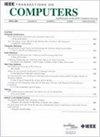Hardware Accelerated Vision Transformer via Heterogeneous Architecture Design and Adaptive Dataflow Mapping
IF 3.6
2区 计算机科学
Q2 COMPUTER SCIENCE, HARDWARE & ARCHITECTURE
引用次数: 0
Abstract
Vision transformer (ViT) models have demonstrated remarkable advantages in visual tasks. However, the ViT model contains various types of operators, and its sophisticated model structure imposes substantial computational complexity and storage burden. Existing hardware solutions still fail to fully unleash the ViT acceleration potential due to the mismatch between operators and hardware architectures, suffering from inefficient dataflow mapping. This work proposes HDViT, a full-fledged heterogeneous hardware accelerator on FPGA, to enhance the ViT acceleration by comprehensively analyzing and addressing the challenges of heterogeneous architecture design. Specifically, HDViT first develops a heterogeneous architecture design that is composed of multiple processing engines (PEs) to accelerate various operators in the ViT model. Then, HDViT devises a hybrid-oriented dataflow mapping strategy to reduce data transmission granularity and alleviate storage resource pressure. Lastly, to achieve the latency balancing among multiple PEs, we formulate the HDViT architecture and implement an automated exploration process to identify optimized parallelism parameters that satisfy computation and storage demands while enhancing the heterogeneous architectural performance. Experimental results indicate that HDViT achieves significant performance speedups of 2.16求助全文
约1分钟内获得全文
求助全文
来源期刊

IEEE Transactions on Computers
工程技术-工程:电子与电气
CiteScore
6.60
自引率
5.40%
发文量
199
审稿时长
6.0 months
期刊介绍:
The IEEE Transactions on Computers is a monthly publication with a wide distribution to researchers, developers, technical managers, and educators in the computer field. It publishes papers on research in areas of current interest to the readers. These areas include, but are not limited to, the following: a) computer organizations and architectures; b) operating systems, software systems, and communication protocols; c) real-time systems and embedded systems; d) digital devices, computer components, and interconnection networks; e) specification, design, prototyping, and testing methods and tools; f) performance, fault tolerance, reliability, security, and testability; g) case studies and experimental and theoretical evaluations; and h) new and important applications and trends.
 求助内容:
求助内容: 应助结果提醒方式:
应助结果提醒方式:


